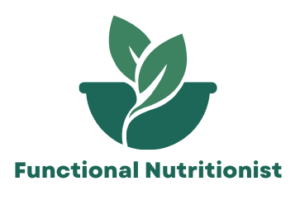Malnutrition can be experienced by adults. This is a condition where someone cannot meet their nutritional needs, so that the body cannot function properly. So, what are the ways to overcome malnutrition in adults? Here are some ways according to functional nutritionist.

Malnutrition can occur due to a lack of nutrients as a whole or only some nutrients in very significant amounts. There are several signs of malnutrition in adults, namely drastic weight loss, often feeling tired, getting sick easily, and premature aging. Treatment for malnutrition will vary depending on the severity experienced and the presence of comorbidities or complications that arise.
Nutritionists will usually provide a very specific treatment plan for each patient as described below.
- General lifestyle changes
Changing lifestyle is the main solution given by nutritionists in how to overcome malnutrition in adults. Some lifestyles that must be avoided or stopped usually include the following habits.
Smoking.
Consuming alcoholic beverages.
Eating fast food or junk food too often.
Irregular sleep patterns.
Too strict a diet.
This lifestyle can be a trigger for someone not being able to meet their daily nutritional needs properly.
- Changing the composition of the main meal
As the main source of nutrition and energy, you need to pay attention and change the composition of your food to be more nutritious by following balanced nutrition guidelines. In fact, according to a study in the Journal of Clinical Medicine (2019), fortified foods may be needed as a way to overcome malnutrition in adults and the elderly. These fortified foods are foods that have been added with certain nutrients needed by the body. The types of fortified foods that are usually recommended to overcome malnutrition in adults are milk, bread, yogurt, fruit juice, cereal, or eggs.
- Regulating meal frequency
In addition to changing the composition of the main meal, adults will be advised to regulate the frequency of meals and snacks as a way to overcome malnutrition. Patients who have appetite problems will usually be advised to eat in small portions but more frequently. To apply this method of overcoming malnutrition in adults, you may need supervision and assistance so that you can consistently eat regularly.
- Switch to healthier drinks
If you often drink alcohol or drinks that are high in sugar and low in nutrients, you should immediately switch to consuming healthier drinks. You are still advised to meet your drinking water needs of around 2 liters per day. However, you may also need to consume drinks that contain certain nutrients, such as high-protein milk, fruit juice, and smoothies.
- Medical treatment
If your condition is indeed unable to meet your nutritional needs orally (through the mouth), you may be given the following medical treatment.
A small tube as a channel to insert nutrients directly into the digestive system. This is also called the nasogastric tube process. This tube can be installed in the stomach or intestines.
Infusion to provide nutrients and fluids directly into the blood vessels.
After being given a special program, monitoring will usually be carried out again to see the progress of body weight and eating ability. Routine monitoring can help ensure that calorie and nutrient intake is appropriate or not. Ways to overcome malnutrition in adults can include lifestyle changes, regular and balanced nutritional diets, and medical care. Doctors or nutritionists will provide appropriate treatment according to the patient’s condition. If you often experience symptoms such as weakness, easy to get sick and difficult to recover, and hair loss, immediately check your nutritional adequacy.
Various Benefits of Nutrients from Eating Snapper Fish
Fish is a good source of protein besides beef or chicken. The type of fish that is quite popular and sells well on the market is snapper. This fish, which comes from deep sea waters, actually has nutritional content with many benefits.
Benefits of the nutritional content of snapper fish
The protein content in snapper fish certainly does not need to be doubted. In 100 grams of snapper fish, there are 20.51 grams of protein.
You can rely on snapper fish as a source of protein nutrients with low calories, so it is safe for those of you who are on a healthy diet. Apart from its low calories and high protein, what other nutrients are contained in it?
- Good fat
Eating snapper fish will not increase total body fat. The reason is, the fat in this fish is good fat, namely unsaturated fat. The unsaturated fat in snapper fish has the benefit of helping to maintain heart health. In addition, there are omega-3 fatty acids that are beneficial for the body. 100 grams of snapper fish, there are 0.31 grams of omega-3 fatty acids. The American Heart Association states that by consuming foods that contain high omega-3 acids, it will be able to reduce the risk of heart disease and help maintain normal cholesterol levels.
- Minerals
There are many minerals contained in snapper fish. If you eat 100 grams of snapper fish, the minerals you get are:
Phosphorus: 198 milligrams
Calcium: 32 milligrams
Zinc: 0.36 milligrams
Iron: 0.18 milligrams
The various minerals contained in snapper fish are quite diverse, so eating snapper fish can also fulfill the body’s mineral needs. The minerals in snapper fish have their own benefits for the body, but most of them play a role in the growth and development of body cells.
- Vitamins
Not only rich in minerals, but eating snapper fish can also help meet some of your mineral needs. Below is the vitamin content in 100 grams of snapper fish.
Vitamin A: 106 IU (International Unit)
Vitamin D: 408 IU
In addition, there are various B complex vitamins in it, from vitamin B1 (thiamine), vitamin B2 (riboflavin), vitamin B3 (niacin), to vitamin B9 (folate).
Vitamin B complex has been proven to be good for brain health. Meanwhile, vitamin A is needed for eye health and vitamin D is a determinant of bone health.
Actually, you can consume snapper as a side dish for every big meal. Every time you eat a big meal, you should only consume one portion of snapper, or the equivalent of 40 grams of fish (the size of half a palm). In addition, you should avoid frying, because it will only make it fatty and less good for your health. Although it does have a lot of nutritional content, you should also vary your side dish menu with other sources of protein. So, the body will get more balanced nutrition.








